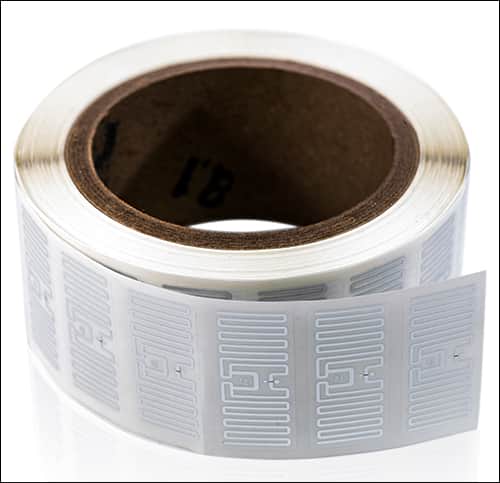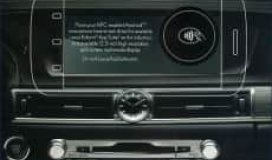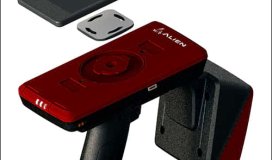Branding, technology and solutions company SML Group has released a small new ultrahigh-frequency (UHF) RFID inlay that, according to the company, offers 30 percent greater performance than other tags of its size. The high-performance tag is intended to make the RFID tagging of apparel easier by requiring less space on hang tickets, or it can be sewn into care labels. According to the company, it supports the tagging of very small items, or with discrete labels, within dense environments.
The GB4U8 inlay measures 42 millimeters by 16 millimeters (1.7 inches by 0.6 inch). It leverages NXP Semiconductors' UCODE 8 chip, along with SML's own antenna design, to accomplish high read sensitivity and improved read rates (see NXP to Release More Sensitive UHF Chip With New Functionality).
The tag has undergone benchmark testing at the Auburn University RFID Test Lab, says Dean Frew, SML's CTO and senior VP of RFID solutions, as well as in-house testing at SML's two U.S.-based simulated store labs. The firm is providing sampling to customers now, he adds, and is expected to make the tags available in large volumes early this year.
SML Group's new tag is one of the first inlays to incorporate the UCODE 8 chip, the company reports, and the first in such a small form factor. A small and sensitive RFID tag, Frew says, solves several problems that have dogged brands and retailers when it comes to RFID deployments.

While retailers have been incorporating EPC UHF RFID tags into products for visibility purposes, Frew says, "customers are driving for smaller- and smaller-sized inlays, but those have come with compromised performance." Numerous product categories are creating the need for smaller, high-performance tags.
That means tags are more difficult to read with 100 percent accuracy within dense environments, such as a crowded store or warehouse, Frew explains, or that they can be slow to read or have a shorter read range. That is insufficient in some cases, he adds—for instance, when stores send employees through a densely packed room to read tags using a handheld reader. "Usually," he states, "small-footprint tags have a problem on densely packed apparel."
When NXP released its UCODE 8 chip, SML began working with the semiconductor company to develop a tag. It decided to start with the most challenging solution, Frew says: a small tag. A larger label is more straightforward to develop, he notes, and will be released later this year.
Avery Dennison has already released its own large-sized tag incorporating the UCODE 8 chip. SML says its version is the smallest to be built with the UCODE 8, and to pass certification testing at Auburn University. SML's engineers developed the antenna and impedance specific for that new chip. The tag takes advantage of several UCODE 8 features, including ease of production. Tag manufacturing has become simpler with the UCODE 7 and UCODE 8, Frew explains; the chips can be cut from a single 12-inch wafer, which makes production faster and less expensive.
At Auburn University, the tag underwent tests for performance and passed for Specs A, B, C, D, M, G, Q, F and N. These specifications cover stacked denim, poly-bagged apparel, boxed electronics and shoes, hanging apparel, products for retailer Target, jewelry and cosmetics, and stacked apparel on a shelf. After proving itself at the university, the company has more recently been testing the new tags at its own lab, affixing them to thousands of items and testing them side by side against SML's larger GB3 tags, in order to compare performance.
With SML's Clarity software, users can set the RFID system to read tags at maximum speed. At this speed, the company finds, the tags can process RFID-based inventory data faster than other small tags, and just as fast as SML's larger tags. That, according to Frew, means reading tags in inventory cycle counts will be faster, easier and more accurate.
The tag is intended to make RFID more accessible to retailers and brands. Now that the retailer market "has proved that RFID works," Frew states, "they're trying to minimize the impact it has on their operations and packaging and trim." That means the RFID-enabled tags could be incorporated with existing price labels, for instance, and fit easily on care labels.
The tag is intended to be low-cost, the company reports, while significant price drops are primarily being driven by the high volume of RFID tag orders. Frew expects the GB4U8 to be used on any retail or apparel products, as well as cosmetics, fragrance, wine and spirits, pharmaceuticals, sporting goods, and food.



